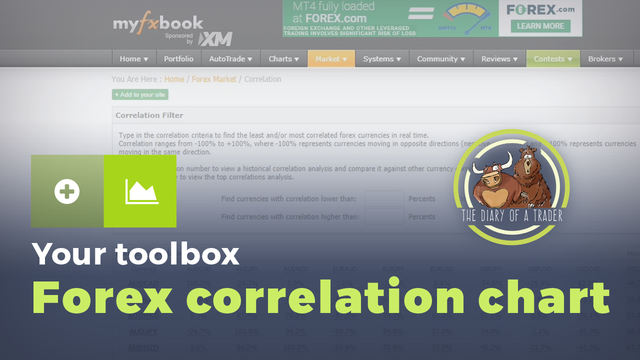Your toolbox Forex correlation chart
When placing a Forex trade, one of the most common mistakes that a new trader will make is that they don’t understand how the global markets are correlated. For example, the Australian dollar is highly leveraged to the gold markets, as Australia is one of the largest exporters of gold in the world. It makes sense that if gold starts to rise, more people are buying it from Australian miners, which of course need to be paid in the Australian dollar. This creates demand for the currency. However, most new traders don’t understand that there are plenty of opportunities to figure out the correlations on the Internet, in various freely available charts and tables.
One of the best charts that I have found online is found that http://www.myfxbook.com, as it lists not only Forex pairs, but commodities and indices around the world. When you look at the chart, you can see how a currency pair performs against other currency pairs or financial instruments. The results are shown in percentage form, and with either a positive or negative correlation. For example, the AUD/JPY pair is 94% correlated to the EUR/JPY pair. In other words, if the AUD/JPY pair is starting to rally, the EUR/JPY pair tends to rally as well. Obviously, if one is falling, there’s a 94% chance of the other one is as well. By contrast, the CHF/JPY pair is negatively correlated to the EUR/AUD pair with the result of -81.4%. This means that 81.4% of the time the pairs will move in opposite directions.
So how does this help you win trading? It’s quite simple, if you know that there is a high correlation between 2 markets, you can watch one move, and then place the trade that you’re looking at in the correlating market if it needs to catch up. You can also look at a cross correlation with some type of indices as well. For example, Silver/EUR will move in a 52.9% correlation to the EUR/USD pair. This makes sense, because typically money will flow away from the US dollar, which almost always means that the EUR will gain strength, just as precious metals will.



 Difference Between Hammer and Hanging Man 2023 [ Must Watch for Trader ]
Difference Between Hammer and Hanging Man 2023 [ Must Watch for Trader ]